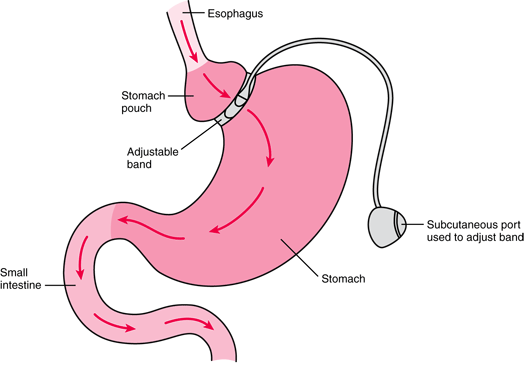Gastric Banding
The current laparoscopic gastric band insertion (also known as “lap-band”) is a restrictive procedure. A small pouch of stomach is created above the band, and therefore limits the amount of food one can eat, before this “pouch” fills up. The band itself can be inflated and deflated with fluid by an access port under the skin on the abdominal wall. Multiple adjustments are required to reach the optimal filling volume of the adjustable band. This is done during the follow up consultation.
The laparoscopic adjustable gastric band (LAGB) is also known as the “Lap-Band”. This is a purely restrictive procedure and involves the placement of a silicone “band” around the upper part of the stomach. This results in a small stomach pouch being created above the level of the gastric band. Since this new stomach pouch is small, it means that you feel fuller after eating only a small amount of food. A tubing then connects the band to an access port that is placed under the skin. This band can be inflated with a liquid (normal saline) through the port. Inflation and deflation of the band controls how easily food can pass through the band. As there are no staple lines and joins (anastomosis) performed in this procedure, it has a low early complication rate. This procedure has lost its popularity in the recent years and has been replaced by other bariatric procedures – namely the sleeve gastrectomy.

The diagram shows that the gastric band creating a small stomach pouch above the band. Having a smaller stomach limits the amount of solid you eat before you feel full.


